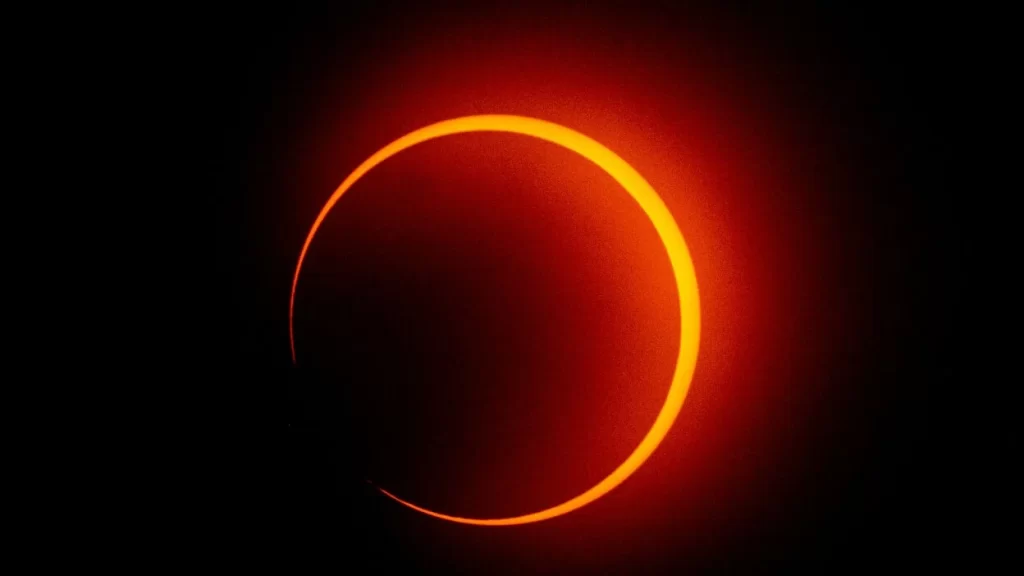The Majesty of Eclipses: Unveiling the Mysteries of Celestial Darkness
Eclipses, with their dramatic interplay of light and shadow, have captivated humanity for centuries. These celestial events occur when one astronomical object blocks the light from another, creating a temporary veil across the sky. This section delves into the different types of eclipses, their causes, and how to safely witness them.
Celestial Shadows: Unveiling the Types of Eclipses
There are two main types of eclipses: solar and lunar. Each type offers a unique spectacle, showcasing the intricate dance of celestial bodies.
- Solar Eclipse: A solar eclipse occurs when the moon passes directly between the sun and Earth, casting a shadow on a portion of Earth’s surface. Observers within the path of totality will experience a brief period of complete darkness, witnessing the sun’s corona (outermost layer) as a faint glow around the dark moon.
- Lunar Eclipse: A lunar eclipse occurs when Earth casts a shadow on the moon. This happens when the sun, Earth, and moon are aligned in a nearly straight line. During a lunar eclipse, the moon appears to darken, taking on a reddish hue due to sunlight filtering through Earth’s atmosphere.
The Science Behind the Spectacle: Understanding the Causes
The precise alignment of celestial bodies is crucial for eclipses to occur.
-
Solar Eclipse: The moon’s orbit around Earth is slightly tilted, so eclipses don’t occur every month. When the tilt aligns perfectly, the moon’s shadow falls on Earth, creating a solar eclipse. The path of totality, where complete darkness is experienced, is narrow, typically only a few hundred kilometers wide.
-
Lunar Eclipse: Lunar eclipses are more frequent than solar eclipses because the moon’s orbit is large enough to pass through Earth’s shadow more often. However, a lunar eclipse is not visible from all parts of Earth, as it depends on whether the observer is positioned in the night side of Earth facing the moon.
A Witness to Darkness: Safely Observing Eclipses
While eclipses are awe-inspiring events, it’s crucial to observe them safely. Here are some essential precautions:
- Never look directly at the sun during a solar eclipse. The sun’s intense light, even during a partial eclipse, can permanently damage your eyesight. Use specially designed solar eclipse glasses with certified filters to view the sun.
- Consult reputable sources: Organizations like NASA or local astronomy clubs often provide information on upcoming eclipses, including safe viewing methods and potential viewing locations.
- Consider alternative viewing methods: If you cannot obtain safe solar eclipse glasses, indirect viewing methods like pinhole cameras or eclipse projection techniques can be used to observe the eclipse safely.
Witnessing a Total Solar Eclipse:
A total solar eclipse is a truly breathtaking experience. Here’s what you can expect:
- Moments before totality: The sun’s light will dim progressively, and the temperature might drop slightly. You might also see “shadow bands,” rippling patterns on the ground caused by the uneven lunar shadow.
- Totality: Darkness descends for a brief period, usually lasting a few minutes. The sun’s corona becomes visible, and planets or bright stars might appear.
- After totality: The sun’s light gradually returns, following the same sequence in reverse order.
The Allure of Eclipses: A Legacy of Wonder
Eclipses have held cultural and scientific significance for millennia. They have inspired myths and legends, and their prediction has been a hallmark of advanced astronomy. Understanding the science behind eclipses allows us to appreciate these celestial events not only for their beauty but also for the intricate celestial mechanics involved.
Frequently Asked Questions
Q: When is the next eclipse?
A: Eclipses occur frequently, but the specific type of eclipse and its visibility depend on your location. There are various resources to help you find out about upcoming eclipses.
- NASA Eclipse Website: https://eclipse.gsfc.nasa.gov/ provides a searchable database of upcoming solar and lunar eclipses, including details on visibility from different locations.
- Astronomy Apps: Mobile apps like “Sky Map” or “Stellarium Mobile” allow you to track celestial bodies and receive notifications about upcoming eclipses in your area.
Q: Can I see the next eclipse from where I live?
A: The visibility of an eclipse depends on its type and your location.
- Solar Eclipses: The path of totality for a solar eclipse is narrow. You can use resources like the NASA Eclipse Website or astronomy apps to see if your location falls within.



